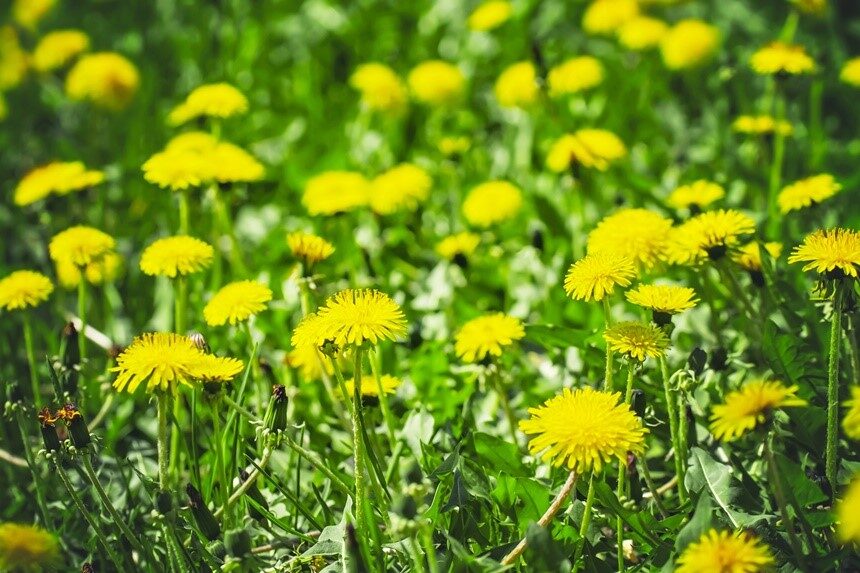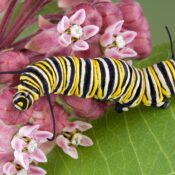April showers bring May flowers, but not all blooms are a welcome sight. Although it’s possible that dandelions arrived on the Mayflower, they do not get the esteem they deserve as plucky immigrants that put down roots in a new land, provide a vitamin-packed culinary delight, and serve as a multi-purpose herbal remedy.
On this latter point, dandelion is so well-respected as a medicine that it garnered the Latin name Taraxicum officinale, which means roughly “the official remedy for disorders.”
It turns out that science has validated many of dandelion’s fabled uses. Indeed, peer-reviewed studies suggest that dandelions are effective in reducing inflammation, regulating blood sugar in diabetics, and lowering cholesterol levels. Research has even shown that dandelion extract curbs the growth and proliferation of cancer cells in both breast cancer and colorectal cancer. I’d say that’s not bad for a weed. (You should still consult a health-care professional before treating yourself at home.)Dry dandelion root is a pretty good diuretic, which explains its reputation as a cure for kidney stones and a way to help lower blood pressure. While these claims may turn out to have merit, at this time they are not well-supported by research, and dandelion root could increase the risk of people with liver or kidney disease.
As a food, dandelion is versatile. Greens are best in spring before the flowers fade. Later in the season, dandelion greens are like lettuce after it has bolted – edible, but not so palatable. Young greens can be served in salad, but I prefer greens chopped and sautéed. They go well in omelets, stir-fry, soup, casserole, or any savory dish. Fresh roots can also be peeled, thinly sliced and sautéed. If a few dandelions took root in your garden last year, turn them into a meal once you’ve uprooted them. It’s a different take on the “weed-and-feed” concept.

Dandelion crowns, which are harvested in early spring before the flowers emerge, are delectable. Whereas most flowers bloom on new growth, dandelions have mature flower-bud clusters tucked into the center of the root crown just below the soil surface. This habit lets them bloom early, and it gives us a veggie-snack with a kiss of sweetness from the tiny blossoms. After removing leaves, use a paring knife to excise the crowns, which will need a good rinse. Lightly steam the crowns and serve with salt or butter.
Roasted dandelion roots make the best coffee substitute I’ve have ever had. After spreading washed roots out on an oven rack so they don’t touch, I heat them at 200° Fahrenheit for 1-2 hours until dry. Then I roast them at 300° for about a half-hour (or sometimes, until the smoke alarm goes off). Roots should be crispy and dark brown throughout, and can be ground with a food processor or mortar and pestle. Compared to coffee, use a less ground-up root per cup.

The beverage tastes dandy, but as mentioned above, is more diuretic than coffee or tea. If your morning commute frequently involves a traffic snarl, choose your breakfast drink accordingly.
I have not tried dandelion wine, a tradition that dates back centuries in Europe, and so have no first-hand experience to report, but scads of recipes can be found on the Internet. Several friends and family members have tried it, with negative and positive reviews pretty well split. I have no idea if it is personal preference or winemaking skill that is so evenly divided.
Dandelion’s common name is from the French dent de lion, or lion’s tooth, referring to the robust serrations along their leaves. Apparently, the French have a corner on the common-name market, because the other moniker is pis en lit, or “wet the bed” (for obvious reasons).
Given the many virtues of dandelions, we should celebrate them. Yet homeowners in the U.S. use 80 million pounds of lawn chemicals each year, 10 times the amount farmers use. All this comes at an annual cost of $35 billion, or an average of $195 per household. In addition, serious health concerns have been raised about common weed-killer ingredients like 2,4-D and dicamba.
For those who can’t sleep at night if there are “lions” lurking on the lawn, here’s how to tame them at no cost and without chemicals: Set the mower to cut at 4 inches, and leave the clippings. By the second season, the number of weeds will be vastly reduced. This also eases grub damage, disease pressure, and the need for added nitrogen.
I say we stop trying to kill the only North American lion that is not endangered, and learn to appreciate it more.
Former Cornell Extension educator Paul Hetzler loves dandelions, and is working on his ailurophobia (fear of lions).
Become a Saturday Evening Post member and enjoy unlimited access. Subscribe now




Comments
REMOVING, not retouching -ugh.
I made dandelion wine a few years back – it was delicious, but SO MUCH WORK, harvesting the flower heads and retouching all the sepals – UGH.
My Grandma was born in 1870 and she had good things to say about Dandelion Tea.. and use of salad greens. Unfortunately I do not remember HOW she actually made them usable.. but back then they were not considered always something to get rid of. I have purchased Dandelion root at the Health food store and it absolutely is a diuretic.
(Chicago) Years ago we had invited inner city children come to a church program and they had never seen Dandelions before spread like a carpet of yellow on the many lawns in the suburbs, ..they thought the flowers were beautiful!! I guess it is all in the eyes of the beholder.
Wow. I so had no idea what a useful, healthy flower the dandelion is. Oh I know it’s a weed, but it’s too pretty to be called that; especially if there’s a field of them. Open to the Lionstooth coffee substitute. I’m figuring it’s caffeine-free which is always my choice. Never heard of anyone getting high off dried dandelion leaves unless you can? Figuring no, but always open to a little enlightenment on that front if there’s any to be had. Feel free to review and advise.